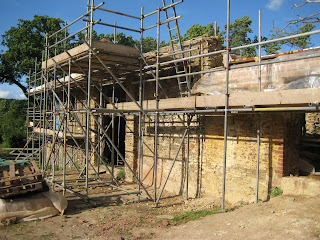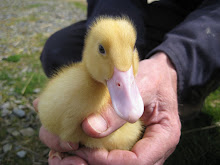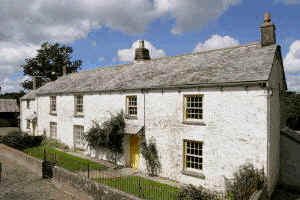 ...but not yet. Talk about creating parental havoc! I nurtured my goose eggs through 31 incubating days, popped three goslings (with some duckling mates) under a heat lamp and fed and watered them for weeks. Then I put them the outside to enjoy the sun and the grass. They spent a couple of weeks growing gawky and mildly feathery among the fluff, and I looked on maternally, pleased at their progress, chuffed at my surrogate motherhood.
...but not yet. Talk about creating parental havoc! I nurtured my goose eggs through 31 incubating days, popped three goslings (with some duckling mates) under a heat lamp and fed and watered them for weeks. Then I put them the outside to enjoy the sun and the grass. They spent a couple of weeks growing gawky and mildly feathery among the fluff, and I looked on maternally, pleased at their progress, chuffed at my surrogate motherhood.Then it was time to get them out of their small pen and into the big wide world with the gaggle of geese in the orchard. One of the geese was sitting on a clutch of eggs, so I popped them in with her, and they went running to her side and sat under her wing overnight. Satisfied that the grown-ups had bonded firmly with the youngsters, they were all let out to play and roam under the apple trees, cropping grass for all they were worth. I go back up an hour later to check all is well, and... no goslings.
I hunt high and low, in ditch, under hedge, behind logs, in secret tuffets of grass, between bales, through gates, in every conceivable place. I am a mother bereft. It is the empty nest syndrome for real. I feel SO GUILTY! And why didn't the geese give a warning shout if there was a predator about?
The hunting continues, and everywhere I can hear the cheeping of young birds, and I'm sure the goslings are about somewhere, but every wild bird is fledging at the moment and it's impossible to isolate a honk from a cluck or a trill. I go to bed forlorn.
This morning I rush about getting ready to go to town, and hear a cry. All three gossies have reappeared, unharmed, in the yard being used by the builders. The birds rush forward, terrified by their unwanted freedom, lack of food and water. They are gathered up in welcoming arms, made much of, and put safely in a pen whilst their orchard accommodation is adjusted to keep them with their elders but secured.
But of course, before anyone thinks I have turned into a complete softy, if any reveal themselves to be ganders they will become freezer fodder and served to my very best mates. With apple sauce.



































